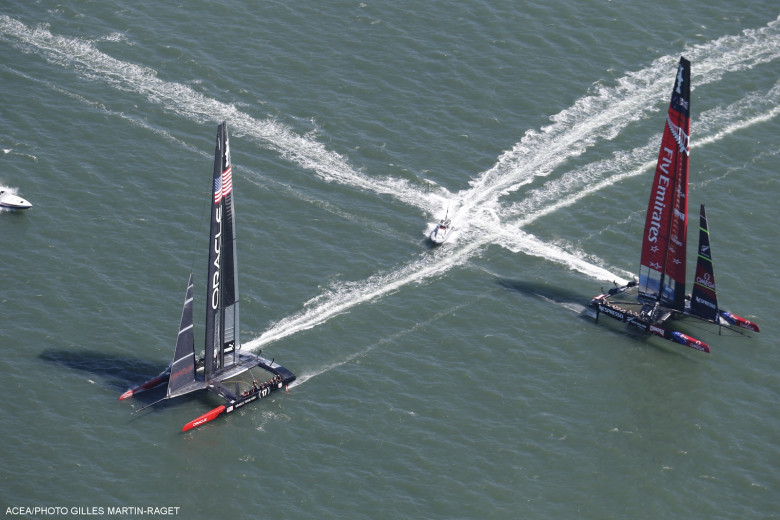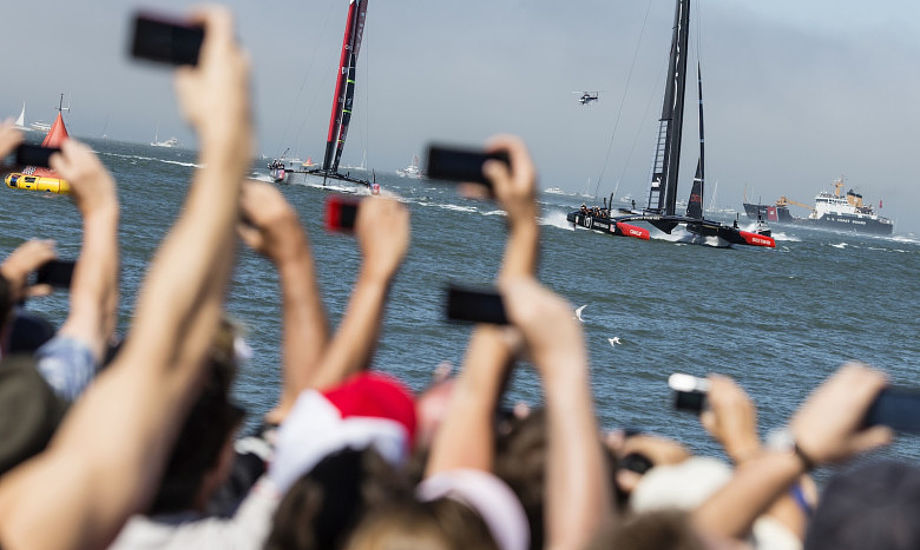Se America's Cup relive - Team New Zealand vinder de to første sejladser
Se nu Oracle Team USA mod Team New Zealand relive. Kiwierne var klart foran i mål i begge sejladser lørdag aften. Oracle har meget at lære. Opdateret kl. 23.44. Nye sejladser søndag.
Her er mere viden om de hurtige AC 72ere.
America’s Cup: What you may not know about the AC72
Af John Longley, 1983 America’s Cup winner
After spending a week in San Francisco and having the opportunity to talk to a number of people who have actually sailed the extraordinary AC72s, I have gathered a bit of AC72 trivia to share…
* If you had an engine to power the hydraulics rather than grinders, you could sail the AC72s with 4 people rather than the crew of 11 they now sail with.
* There is really only one trimmer on board and he controls the wing. The helmsman controls the cant and rake of the board with buttons on a control pad in front of him but only has 3 seconds of stored power before he has to “throw bananas” into the grinding pit i.e. ask for more hydraulic power.
* They have seen 47 knots as the top speed so far but expect to see the 50 knot barrier broken in the Cup match.
* The boats go directly downwind 1.8 times faster than the wind. So if you let a balloon go as you went around the top mark you would easily beat it to the bottom mark.
* There is only 4 degrees difference to the apparent wind from going on the wind to running as deep as you can.
* If you lost the hydraulics while the boats were foiling they would be completely uncontrollable and would most likely capsize.
* It is faster to find the strongest adverse current going downwind because the stronger apparent that is then generated translates into more speed than if you were sailing in slack water. (Warning – this takes a bit to get your head around)
* When sailing downwind you look for the puffs in front of you not behind you.
* It is actually quite dry on the boats, unless you make a mistake and come off the foils, as you are flying a couple of metres above the water. Waves have almost no impact on the boat when foiling.
* In strong wind you carry negative camber at the top of the wing to “reef” or de-power the wing.
* All crew carry personal tackle so they can effectively rappel down the netting if the boat capsizes.
* Gennakers are only used below about 8 knots; the jibs only provide about 3% of the lift up wind.
* The foil on the rudder generates about 800 kg of lift with the rest coming from the center board foil to lift the 7 ton yachts clear of the water.
* The centre board foil’s tip comes out of the water so it effectively works like a governor on an engine i.e. as the board generates too much vertical lift it comes out of the water, the area is thus reduced so it goes back down etc until it finds equilibrium.




